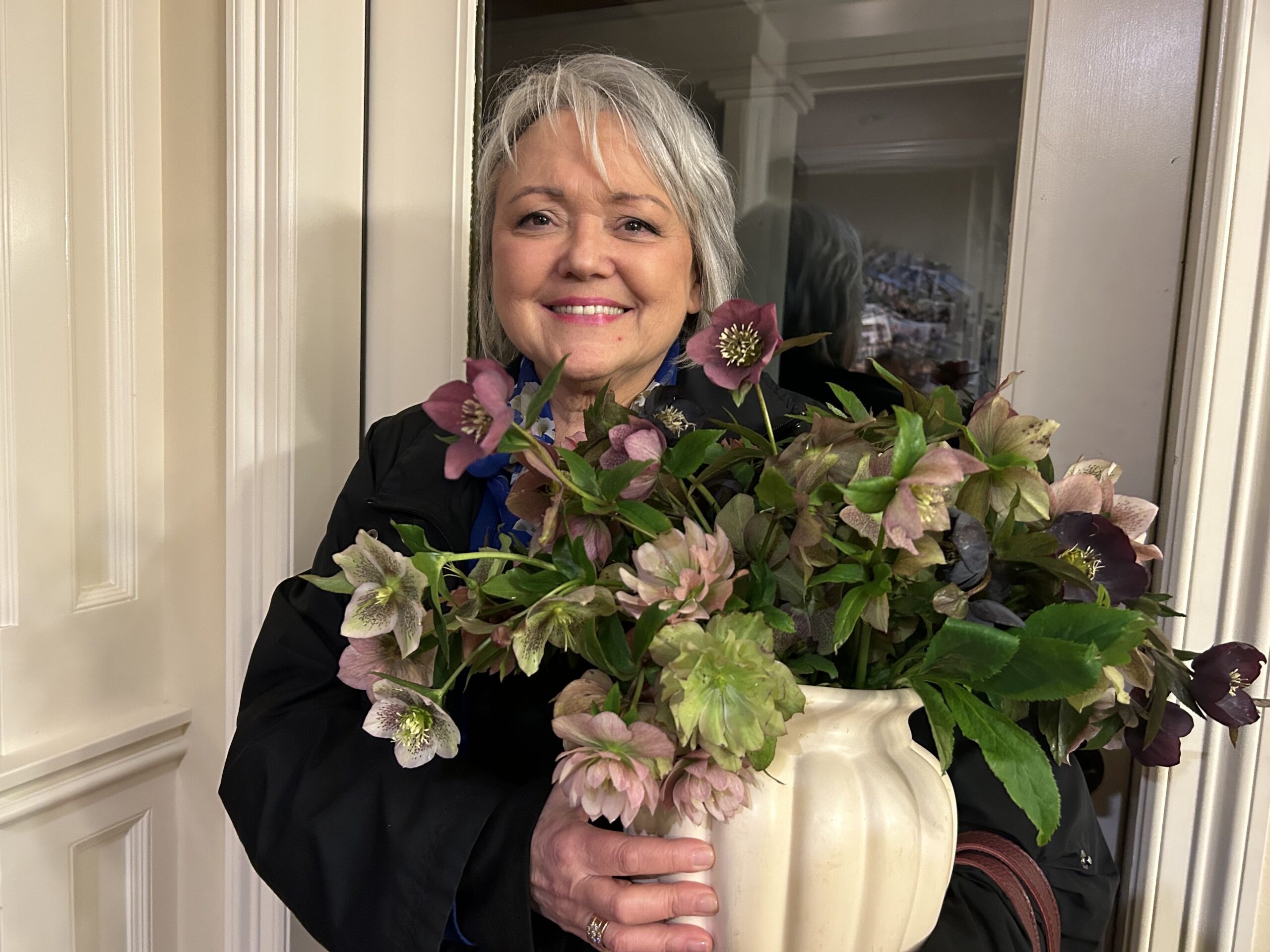
Diane Cashman knew she wanted to be a nurse at five years old when a family member was in the hospital.
“I saw those nurses walk by in those beautiful white outfits with their caps, and I was just so excited to see them,” Cashman said. “So that’s when I decided I was going [to be a nurse].”
That moment eventually turned into a decades-long career as a nurse and nursing educator. Cashman retired from serving as a nursing instructor in March. She taught at colleges around the Puget Sound region and with the University of Washington since 1999, when she first started working with the university as a clinical preceptor.
“Of course, as I grew up, I found out that there was more to nursing than wearing white, but I never really veered off of that,” Cashman said. “I did other things in my life. But I still had this focus.”
One of those other things included 31 years as a flight attendant. She first started nursing school during a flight attendant strike. When it ended, she found herself balancing classes and flying. She remembers lugging heavy textbooks and even a typewriter with her on planes so she could work on her coursework during layovers.
After graduation, she continued to juggle the two careers, working as a flight attendant and nurse. Instead of seeing them at odds, to her they were complimentary.
“They’re actually similar types of skills that you use for both,” Cashman said. “You’re in service to people. You’re trying to make them feel better. You’re calming a lot of nerves. You’re using your critical thinking.”
Her passion for teaching came as a natural result of working as a nurse. Whenever nursing students came to the hospital she was working at, she always asked to teach them. She especially loved those “Aha! moments” when she could tell a student had finally grasped an idea. So, she decided to go back to school again to become a nursing instructor.
By that point, she was working as a nurse, working as a flight attendant, and the mother of four children. For months on end, while back in school, she was working every single day of the week.
“Layovers were like a vacation…” Cashman said. “No children, no husband, I could just sit in some really grand hotel somewhere and sleep.”
She intended to keep working as a flight attendant for the rest of her career. However, when a change in the airline’s pension policy meant she would lose out on her earned retirement benefits if she kept working as a flight attendant, Cashman decided to retire from flying, and nursing became her sole career.
Even so, her work in the nursing field has touched a diverse set of roles and settings. In addition to teaching, she’s served as a legal consultant, made house calls, volunteered at a local clinic, and worked in hospitals, family care and reproductive health.
“I have had a very varied career…” Cashman said. “I think that benefited the students in the sense that I could come in and talk about what it’s like to be in a hospital, what it’s like to be in clinical practice.”
She also taught online years before the pandemic made it commonplace, although that didn’t save her from the scramble to adapt the curriculum during 2020.
“We had to become Zoom experts in about three weeks,” Cashman said.
She remembers puzzling out how to teach starting IVs over Zoom and assembling a contraption with a balloon full of simulated blood inside an inflated glove to demonstrate.
“It was a circus, but they got the idea,” Cashman said.
It’s a surprise to her that she ended up teaching at UW. When she first started college at 17, she went to UW and dropped out after just two quarters. Looking back, she says it was because she was too young. She never imagined at the time that she would end up ever coming back.
“And the way things worked out, I ended up going back there as an instructor,” Cashman said.
Although it’s a big university, she’s been pleasantly surprised how it can still feel like a close-knit community within the units.
“Everybody knows everybody,” Cashman said. “People try to help. There’s a lot of support… You can not see somebody for a few months or a couple quarters and then you just pick right up again.”
At the UW she’s taught across many programs and classes, but her favorite course to teach is a physical assessment class, because she can watch as the students’ practical skills steadily improve over the course of the quarter.
“I tell [my students] at the beginning of each quarter, whatever level of nursing,” Cashman said, “I say, I wish you would be able to look at yourselves 10 weeks from now, because you are going to be so different. You’re going to have such confidence. You’re going to walk down that hallway at the hospital, or you’re going to go see a patient in a room, and you won’t even recognize yourself. And they all go, ‘Oh, no, it’s not going to happen’. It will. And so that’s my favorite thing, is how they change.”
Even though she feels like the time has come for her to retire from teaching, that doesn’t mean she won’t miss it. Anyone who teaches knows it becomes part of you, Cashman said.
Her impact will continue on for countless years in the many students she’s taught. Whenever Cashman runs into one of her former students at a hospital or hears her daughter went to a nurse she trained, she can see the difference she’s made in the community around her. Those are her proudest moments.
“Just me, one little person, I’ve infiltrated the community,” Cashman said. “And that’s very cool, to think that what I’m doing now is going to echo through many years.”